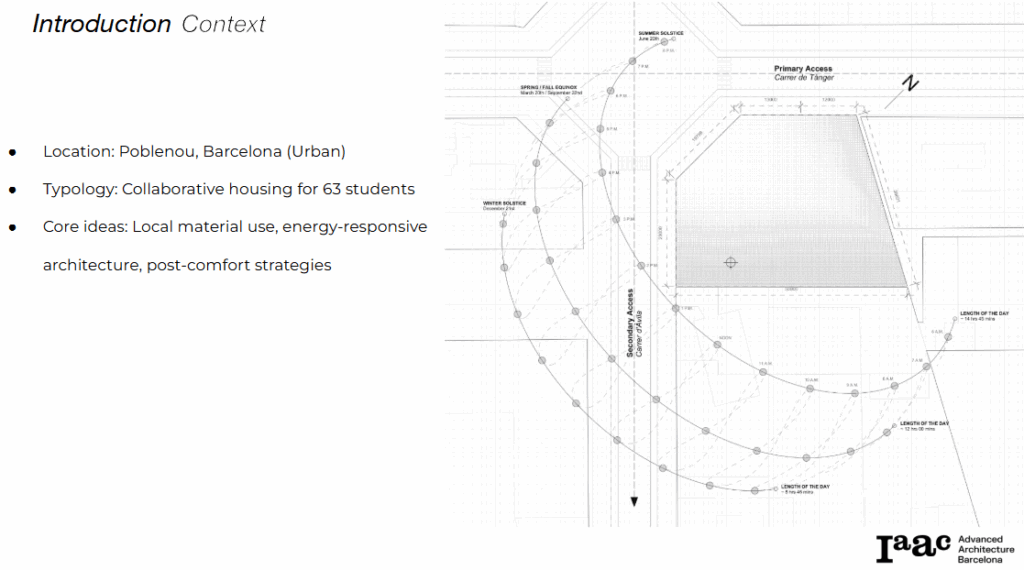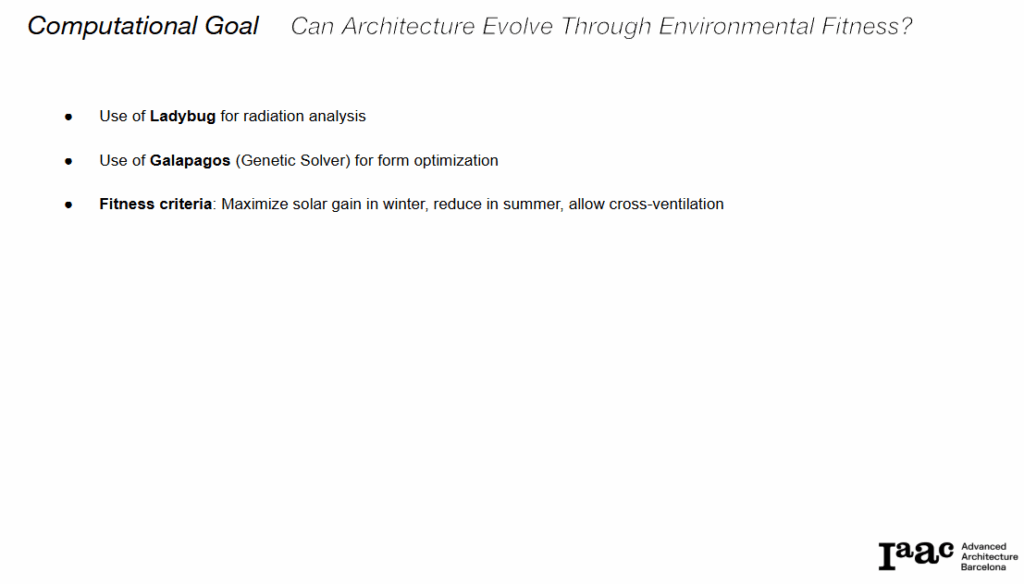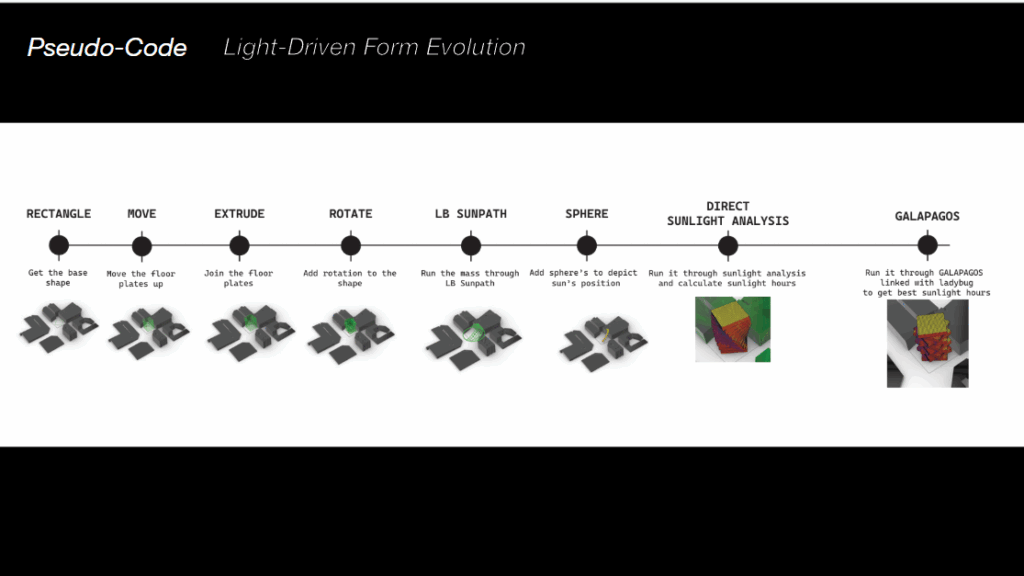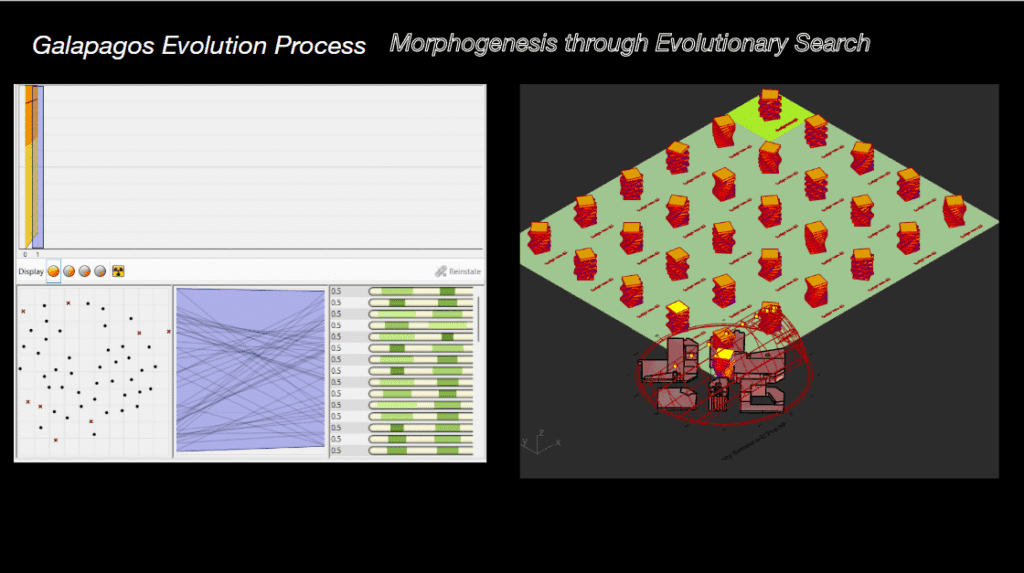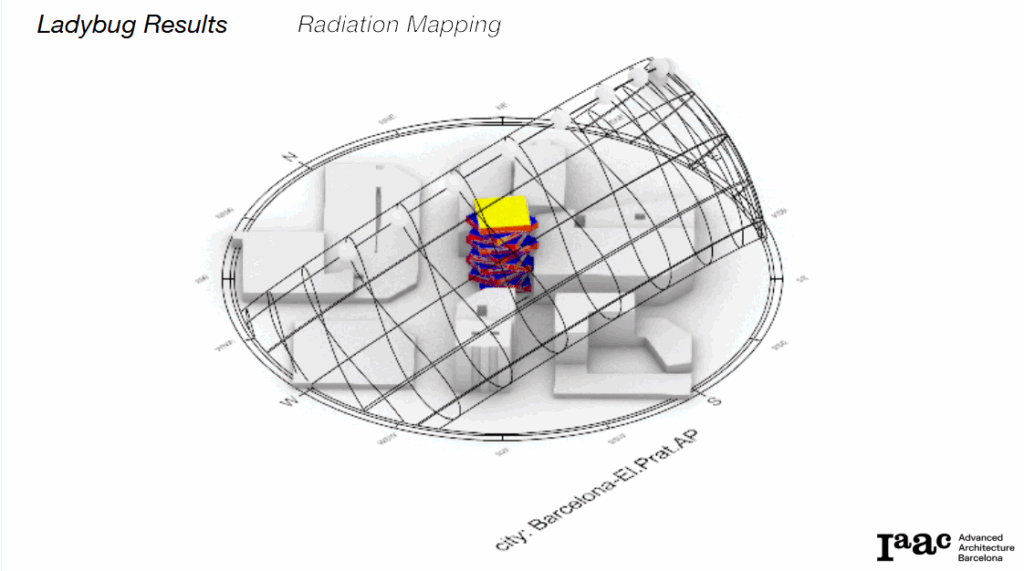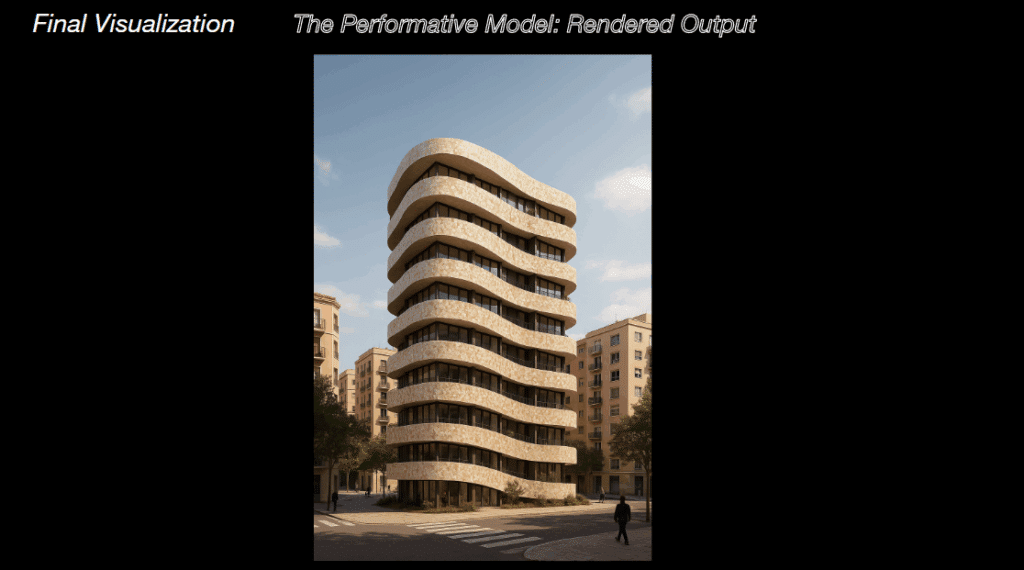Optimizing Student Housing with Sunlight-Driven Computation
This project uses Ladybug and Galapagos within Grasshopper to optimize the form and massing of a student housing complex based on solar performance. Ladybug was used to run radiation and sun-hour analyses, helping evaluate how different configurations received sunlight throughout the year. Galapagos, a genetic algorithm solver, was applied to evolve the geometry based on fitness criteria—specifically, maximizing winter solar gain while minimizing summer overheating.
Using Grasshopper, we explored the rotation of various floor plates, which became the generative logic for the final massing. By adjusting orientation, courtyard size, and surface articulation, the form responded directly to its climatic context, shaping a design that improves natural daylight access while reducing thermal load—creating an energy-efficient, sunlight-responsive housing system.
